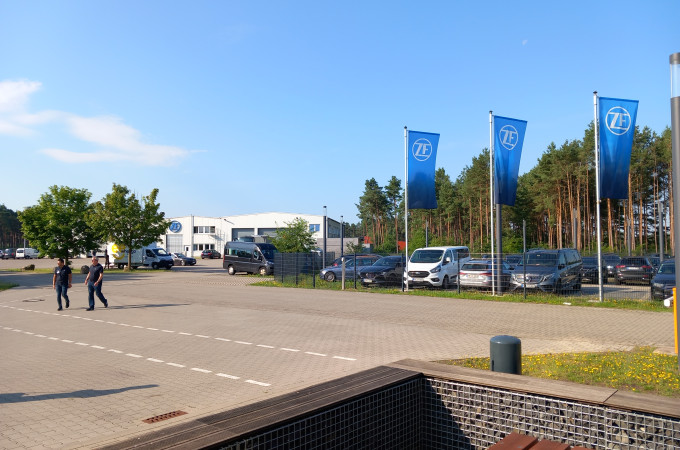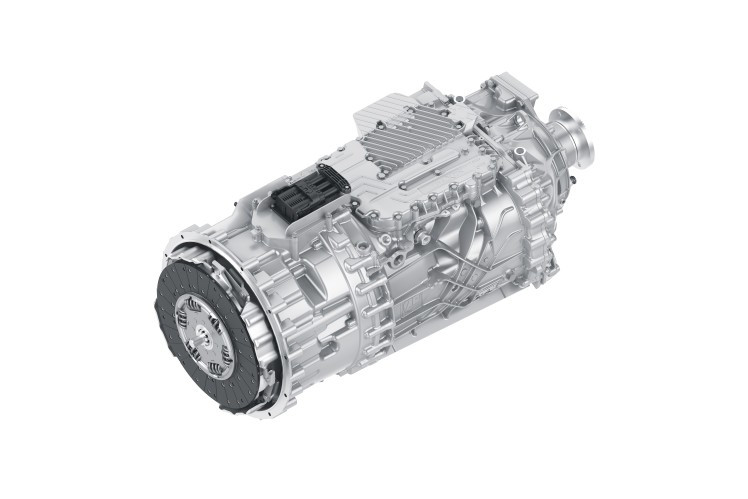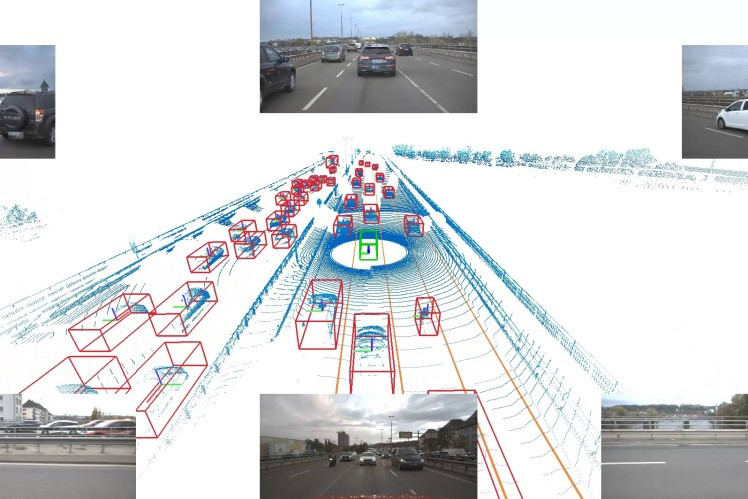ZF presents new hybrid drive and safety technologies at Global Technology Day 2024
By Bradley Osborne - 30th July 2024

ZF test track in Jeversen, Germany
Germany – At this year’s ‘Global Technology Day’ – held at its test track on 27 June in Jeversen, to the north of Hanover – ZF Group’s CEO, Dr Holger Klein, observed that, while sales of fully electric cars are slowing down, hybrids are seeing “a renaissance”. Fittingly, ZF used the event to promote one of its latest innovations, a new hybrid drive system (see more below on the ‘TraXon 2 Hybrid’). During the rest of the day, however, we were taken onto the track to see how its advanced safety technologies from the passenger car segment are now being transferred to trucks.
In the first truck I rode in as a passenger, I was strapped in with ZF’s “smart” seat belt, an innovation which it first developed for cars. When the truck’s various sensors detect another vehicle approaching in its blind spot, the belt vibrated to alert the driver. Moreover, when the driver demonstrated the emergency brake – bringing us from 80 km/h to a sudden stop – the belt partly restrained me as I lurched forward in my seat. Admittedly, it was not comfortable, and I found that it remained very tight for the rest of the drive: but it was a prototype, after all. The haptic feedback provided by the “smart” belt is certainly difficult to ignore, and it is easy to see how it could effectively be used, for instance, in alerting a drowsy or inattentive driver.
Several other technologies were shown: it was both edifying and amusing to see a child-sized automated dummy place itself in the path of a moving truck, which automatically stopped itself just in time following the activation of its sensors. The truck will also detect and react to pedestrians when moving off – this feature was demonstrated with the same dummy. Other technologies related to electrification and motion control, some of which again originated in the group’s car development. Professor Dr Peter Laier, who is the head of ZF’s Commercial Vehicle Solutions division, told press that roughly 50% of the technologies developed for the car market can be carried over straight to trucks, while the rest can be transferred with varying degrees of adaptation.

Dr Holger Klein, ZF CEO, addresses the audience
Though it is a much smaller market than the car segment, developing new safety technologies for the truck segment is often more complicated due to the greater demands of commercial vehicle applications. Moreover, ZF expects there to be a wider range of driveline options for trucks well into the future, complicating product development for the segment even further. However, Dr Laier told the press that, no matter how the market evolves, ZF will be ready to respond. Dr Klein said: “We should be very open to all kinds of technology.”
The TraXon 2 Hybrid

ZF TraXon 2 Hybrid
Although the upward trend in hybrid car sales is very recent, ZF has in fact been working on its latest hybrid transmission for commercial vehicles for longer than that – about two years, Dr Laier said. In a single package, the TraXon 2 Hybrid combines ZF’s automated manual transmission technology with an electric drive system, derived from its wide portfolio of electric powertrains. When coupled with a diesel engine in a heavy truck, the TraXon 2 Hybrid will reduce fuel consumption and emissions without losing the range and performance provided by the combustion engine.
Dr Laier told the press that the new hybrid drive system is targeted at Europe and China, where it already has several orders from customers. In China especially, hybrid vehicles are included in the zero-emissions strategy, according to Dr Laier. However, he noted that there is a revival of interest in hybrid vehicles in North America as well. Production is slated for the second half of this decade.
Premiere of ZF Annotate

Promotional image for ZF Annotate
During the morning press conference, ZF also announced a new technology, called ‘ZF Annotate’. Advanced driver assistance and fully-automated systems require vast amounts of reliable data in order to “learn” how to identify risks on the road and react to them quickly and safely. ZF Annotate is intended to speed up the learning process by providing immediate and remote access to a cloud-based “reference system”. It acts in parallel with the ADAS/autonomous system being tested, perceiving the same scenario and processing the same data. It then checks the data against the reference system, which automatically assesses whether objects within the vehicle’s field of view were perceived and classified correctly. The data processed and analysed by ZF Annotate can then be compared with the ADAS or autonomous driving system which is being tested, in order to quickly and accurately measure its performance.
ZF Annotate can thus serve as an intelligent yardstick for the development of new ADAS and self-driving systems. ZF Annotate’s analysis of the sensor data provides the “ground truth”, in ZF’s own words, of the test scenario, allowing the developer to quickly identify discrepancies with the system being tested. ZF claims that, by using ZF Annotate, the validation process for a new safety or self-driving technology could be made ten times faster and 80% cheaper.


